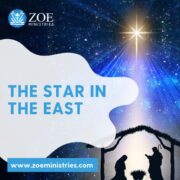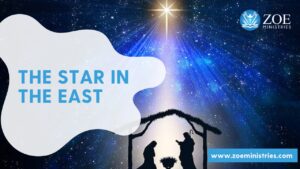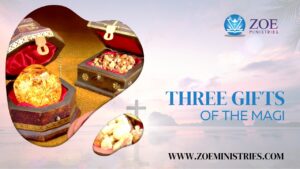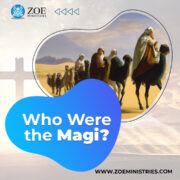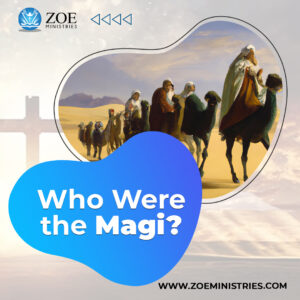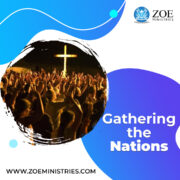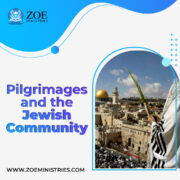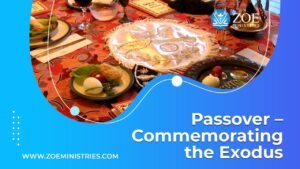The Pilgrimage to the Cross
/4 Comments/in Bishop Jordan /by Bishop Jordan BlogsPassion and Death
Jesus’ life journey now focuses on his death and resurrection. From Jesus’ triumphal entry into Jerusalem until his crucifixion, Passion Week takes up nearly one-third of the canonical gospels.
Jesus expelled the money changers from the Temple for turning it into a den of thieves. He then predicted false prophets, wars, earthquakes, celestial upheavals, persecution of the faithful, an “abomination of desolation,” and unendurable sufferings (Mark 13:1–23). Moreover, he disputed the Jewish elders’ authority and named them hypocrites. He revived Lazarus at Bethany, near Jerusalem. Authorities plotted his assassination after this unique sign (John 11).
Sharing Meals
All four gospels mention Jesus’ Last Supper with his two Apostles in Jerusalem. Pilgrims often share meals, which brings them closer. “This is my body,” Jesus says as he breaks bread and hands it to the disciples in the Synoptics. “This cup that is poured out for you is the new covenant in my blood,” Jesus says as they drink. These events inspired the Christian Eucharist.
After the Last Supper and the Agony in Gethsemane, Judas entered with an armed Sanhedrin mob. He kissed Jesus to identify him, and the crowd arrested him. An anonymous follower cut off a man’s ear to stop them. Peter denied knowing Jesus three times after Jesus’ arrest. He remembered Jesus’ prediction after the third denial when the rooster crows. As a result, Peter sobbed.
The Jewish Sanhedrin judges Jesus. He is subsequently led to Pontius Pilate, the Roman governor, who judges and condemns Jesus for blasphemy, perverting the country, refusing tribute, inciting rebellion against Rome, sorcery, and claiming to be the King of the Jews, the Son of God, and a savior. After washing his hands, Pilate brings Jesus to Calvary for execution.
Invitation
Prophetic wisdom and anointing await you. Connect for a personal prophecy.
Join our LIVE Conference Call!
1) Call 515-604-9266
2) Go to startmeeting.com, and use the login: BishopJordan
Baptism and Ministry
/0 Comments/in Uncategorized /by Bishop Jordan BlogsJohn the Baptist
Christ’s next big step on his journey is to be baptized by John, and then he will be tempted in the wilderness. In their gospels, Matthew, Mark, and Luke, Matthew, Mark, and Luke all talk about Jesus’ baptism. John’s gospel doesn’t speak about Jesus’ baptism directly.
Most modern theologians think that Jesus being baptized by John the Baptist is a historical event that can be known highly. Most biblical scholars see it as one of the two historical facts about Jesus that they can be sure of, along with the fact that he was crucified. They often use it as the starting point for studying the real Jesus. Nevertheless, most Christian groups think that Jesus’ baptism was an important event and is why Christians do baptisms.
John the Baptist in the Gospels
All of the Synoptic stories about Jesus’ baptism start with something about John the Baptist. They show John preaching penance and repentance for the forgiveness of sins and encouraging the poor to give alms (Luke 3:11) as he baptizes people in the desert around the Jordan River near Perea. Furthermore, he also predicts (Luke 3:16) the coming of someone “more powerful” than he is.
Later, Jesus says that John was “the Elijah who was to come” (Matthew 11:14, Mark 9:13–14), the prophet who was supposed to come before the “great and terrible day of the Lord” (Malachi 4:5). Luke also says that John had Elijah’s spirit and power (Luke 1:17). In Mark, John baptizes Jesus. When Jesus gets out of the water, he sees the Holy Spirit coming down to him like a dove, and he hears a voice from heaven saying that he is God’s Son (Mark 1:9–11). This is one of the two times in the gospels when a voice from heaven calls Jesus “Son.”
The other time is the Transfiguration. In this event, the spirit then sends him out into the desert, where Satan tries to get him to do bad things (Mark 1:12–13). Jesus stayed in the Judean Desert and fasted for 40 days and nights. Satan came to Jesus to get him to do something terrible during this time.
Three times, Jesus was tempted by evil. Hedonism (hunger/satisfaction), Egoism (spectacular throws/power), and Materialism (kingdoms/wealth) were the temptations. In his letter, John the Evangelist calls these temptations “in the world,” “lust of eyes,” “lust of the body,” and “pride of life” (egoism). After Jesus said no to each temptation, Satan left, and Jesus went back to Galilee to start his work.
The Beginning of Pilgrimage of Christ’s Ministry
He started in Galilee, north of Judea. After his temptation in the Judean Desert, Jesus begins his mission in Galilee. In Matthew 4:18–20, Jesus meets his first disciples, who will form the early Church in Galilee.
The Sermon on the Mount was one of Jesus’s most important lectures, calming the storm, feeding 5,000 people, walking on water, and other miracles and parables during this time. After Peter’s confession, Jesus changes.
In the Transfiguration (Matthew 17:1–9, Mark 9:2–8, and Luke 9:28–36), Jesus takes Peter and two other apostles up an unnamed mountain, where “he was changed in front of them, and his face shone like the sun, and his garments became brilliant white.”
“This is my Son, the Beloved; I am pleased with him; listen to him,” a brilliant cloud exclaims (Matthew 17:1–9). Jesus returned to the Jordan River, approximately a third down from the Sea of Galilee, where he was baptized (John 10:40–42). Jesus’ final ministry in Jerusalem begins with his Palm Sunday triumphal arrival.
Invitation
Prophetic wisdom and anointing await you. Connect for a personal prophecy.
Join our LIVE Conference Call!
1) Call 515-604-9266
2) Go to startmeeting.com, and use the login: BishopJordan
Christ’s Pilgrimage: His Life, Death, and Resurrection
/0 Comments/in Bishop Jordan /by Bishop Jordan Blogs“Faith is not the clinging to a shrine but an endless pilgrimage of the heart.”
Abraham Joshua Heschel
And I tell you, you are Peter, and on this rock, I will build my church, and the gates of Hades will not prevail against it.
Matthew 16:18 NRSV
Only the Beginning
The Three Wise Men may have come a long way from the East to see Jesus, but Jesus himself was starting his long pilgrimage, which was his life, death, and resurrection.
Jesus was born to Mary, who was Jewish, and Joseph. His family went on a pilgrimage even before he was born. In Luke 1:31–38, the angel Gabriel tells Mary that the Holy Spirit will help her have and give birth to a child named Jesus. When Mary is about to give birth, she and Joseph leave Nazareth and go to Bethlehem, where Joseph’s family is from, to complete the census Caesar Augustus ordered. Mary gave birth to Jesus there, but because there was no room at the inn, she put him in a manger (Luke 2:1–7). Some shepherds hear about Jesus’ birth from an angel. They go to Bethlehem to see him and then spread the news elsewhere (Luke 2:8–20). They go back to Nazareth after Jesus is shown off at the Temple.
The Journey of the Baby
In Matthew 2:1–12, the wise men or Magi from the East bring gifts to the young Jesus as the King of the Jews. In Matthew, we read of another long journey. The Magi also called “wise men,” come from the East to bring gifts to the young Jesus, who they believe to be the King of the Jews. Matthew tells us about another long trip that Jesus and his family took. Herod the Great hears that Jesus was born, and because he wants Jesus killed, he gives the order to kill all male babies under two years old in Bethlehem. But in Joseph’s second dream, an angel warns him, so the family runs away to Egypt. They later come back and settle in Nazareth.
Jesus’ Pilgrimage to Jerusalem
Jesus went to Jerusalem at least twice when he was young, probably during one of the three Jewish Pilgrimage Feasts we discussed in previous chapters. According to Jewish law, when Jesus is brought to the Temple as a baby a man named Simeon tells Mary and Joseph that Jesus is the Messiah “will be a sign of contradiction, but a sword will cut through your soul. Then many people’s hidden thoughts will be revealed.”
A few years later, when Jesus goes missing during a trip to Jerusalem, his parents find him in the Temple, sitting with the teachers and asking them questions. The people are amazed at how much he understands and how well he answers them. Mary scolds Jesus for going missing, but Jesus tells her that he had to be in the temple, “be in the house of his father.” taken by Jesus and his family. Herod the Great hears of Jesus’ birth and, wanting him killed, orders the murders of male infants in Bethlehem under the age of two. But an angel warns Joseph in his second dream, and the family flees to Egypt—later to return and settle in Nazareth.
Presenting Jesus in the Temple
Jesus went to Jerusalem at least twice during his childhood, probably during one of the three Jewish Pilgrimage Feasts. When Jesus is presented as a baby in the Temple per Jewish Law. Simeon says to Mary and Joseph that Jesus “shall stand as a sign of contradiction, while a sword will pierce your soul. Then the secret thoughts of many will come to light.”
Several years later, when Jesus goes missing on a visit to Jerusalem, his parents find him in the Temple sitting among the teachers. He was listening to them and asking questions, and the people are amazed at his understanding and answers; Mary scolds Jesus for going missing, to which Jesus replies that he must “be in his father’s house.”
Invitation
Prophetic wisdom and anointing await you. Connect for a personal prophecy.
Join our LIVE Conference Call!
1) Call 515-604-9266
2) Go to startmeeting.com, and use the login: BishopJordan
The Star in the East
/0 Comments/in Bishop Jordan, homepage blog /by Bishop Jordan BlogsThe Guiding Star
A star in the East led the Magi on their trek. This matched their studies and observation. God can utilize science, literature, and work to bring us to Christ. He used Magi’s astrology.
Ancients valued the stars. 2000 years ago, folks in the Middle East and on the seas didn’t have compasses or highway signs saying “50 miles to Bethlehem.” They relied on fixed stars for direction. They felt God formed them that way. When anything new happened in the sky, like a comet, meteor shower, or a planet or star blazing brighter, the ancients thought it was a message from God, the creator of the heavens and earth. They studied the stars to find God’s message.
The Sybilline Prophecy
Women called Sybils prophesied the birth of a global king outside of Israel. One Sybilline prophecy claimed that a heavenly sign would precede the king’s birth. Suetonius claimed in his “Life of Vespasian” that “there was a deep persuasion… that at this very moment, the East was to grow great and rulers from Judaea were to achieve global empire” This is why the wise men looked up. When they watched the star rise, they thought God was communicating something to them and announcing the birth of a global ruler in the east. They weren’t just curious astrologers. God-seekers. The wise men followed the star and their simple faith to the Holy Land. We don’t know how long their journey was, but the Gospel suggests it was long. Herod asked when the star appeared, and when they didn’t return, he killed every boy under 2 in Bethlehem. The magi believed God spoke to them through the star and traveled for months on each trip.
They visited Jerusalem before Bethlehem. Bethlehem is only six miles from Jerusalem, so they likely assumed the star was coming to rest over the Jewish city rather than a little village. They undoubtedly expected the newborn King of the Jews would be Herod’s son, so they wanted to meet him. They told Herod why they had traveled so far to worship a child to whom God had pointed with a star. Herod questioned his experts on the birthplace of the universal king. In Micah’s book, they told him he’d be born in Judea’s Bethlehem.
The Magi Stayed the Course
Only the Magi remained. None of Herod’s Bible specialists were curious enough to undertake the short journey, but the wise men, who had previously traveled hundreds of miles, left with zeal. Herod pretended to be interested in meeting the kid so he might assassinate him; the Magi had no desire to find out if the Messiah was around. Not only the Magi saw the star. Only they were hungry and brave enough to pursue its light. The magi provide a good example. Wise men were ready. Even though they had wonderful lives where they were (they could afford a lengthy journey and expensive presents), they considered being with the newborn universal king more essential. They left all behind to follow a star in the East.
We must also make a spiritual pilgrimage. The Christian life begins with baptism and ends in Bethlehem and Jerusalem. The wise men were surprised to find Jesus. They expected to see the newborn king in a palace, not a stable, draped in royal silk, surrounded by courtiers, not animals and shepherds. After finding him, they didn’t turn back. They let God adapt their categories rather than fitting God into them. They needed to rethink their notions about power, God, and man and recognize that God’s power is not like the power of this world. God’s ways aren’t what we imagine or want. God’s unique. Throughout life, we must study God’s ways and conform to them, especially when he asks us to model our lives on the Cross.
The Magi gave the Child their riches. They intended to adore him. Therefore, they did so. They sacrificed in their liturgy. Only seeking Christ for our good is unworthy. We can show our appreciation by serving and sacrificing.
Invitation
Prophetic wisdom and anointing await you. Connect for a personal prophecy.
Join our LIVE Conference Call!
1) Call 515-604-9266
2) Go to startmeeting.com, and use the login: BishopJordan
Three Gifts of the Magi
/0 Comments/in Bishop Jordan, homepage blog /by Bishop Jordan BlogsThree Gifts of the Magi
Christmas is passed, but it’s important to remember the traditional story of the Three Wise Men making a pilgrimage to worship Jesus.
There are two major hypotheses on the gifts:
All three presents are both regular offerings and gifts to a king. Myrrh is a standard anointing oil, frankincense is a fragrant, and gold is a value.
The three presents each had a spiritual meaning: gold represented earthly kingship, frankincense (an incense) represented a deity, and myrrh (an embalming ointment) represented death. Until the 15th century, myrrh was employed as an embalming ointment and a penitential incense in funerals and cremations. The Eastern Orthodox Church’s “holy oil” for conducting the sacraments of chrismation and unction is traditionally perfumed with myrrh. Receiving either of these sacraments is usually called “receiving the myrrh.”
In most Western Christian denominations, the visit of the Magi is honored by the celebration of Epiphany, January 6th, which also serves as the feast of the three saints. On December 25th, the Eastern Orthodox celebrate the Magi’s visit.
Invitation
Prophetic wisdom and anointing await you. Connect for a personal prophecy.
Join our LIVE Conference Call!
1) Call 515-604-9266
2) Go to startmeeting.com, and use the login: BishopJordan
Who Were the Magi?
/0 Comments/in Uncategorized /by Bishop Jordan BlogsNew Testament Magi
The New Testament does not give the names of the Magi. However, traditions and legends identify a variety of different names for them. In the Western Christian church, they have all been regarded as saints and are commonly known as:
- Melchior (also Melichior), a Persian scholar;
- Caspar (also Gaspar, Jaspar, Jaspas, Gathaspa, and other variations);
- Balthazar (also Balthasar, Balthassar, and Bithisarea), a Babylonian scholar.
According to Encyclopaedia Britannica, “Balthasar is often depicted as a king of Arabia, Melchior as a king of Persia, and Gaspar as a king of India.” These names appear to be derived from a Greek document. Most likely written in Alexandria around 500, and translated into Latin as Excerpta Latina Barbari.
The phrase “from the east,” more properly “from the rise [of the sun],” is the sole information Matthew gives regarding the place they came from. The Parthian Empire, centered in Persia, controlled nearly all of the territory east of Judea and Syria (except for the deserts of Arabia to the southeast). Though the kingdom tolerated other religions, Zoroastrianism was the dominant religion, with its priestly magos class.
Reverence for the Baby Jesus
Although Matthew’s account does not explicitly state the reason for their journey (other than seeing the star in the east, which they mistook for the star of the King of the Jews), the Syriac Infancy Gospel provides some clarity in the third chapter by stating explicitly that they were pursuing a prophecy from their prophet, Zoradascht (Zoroaster). The Syriac Infancy Gospel (also known as the Arabic Infancy Gospel) is one of the New Testament apocryphal works about Jesus’ infancy. The Magi are depicted as “falling down,” “kneeling,” or “bowing” in their worship of Jesus.
Together with Luke’s birth myth, this simple gesture significantly impacted Christian religious traditions. They were highly reverent symbols and often used while honoring a king. While prostration is somewhat uncommon in the Western Churches, it is still rather frequent in the Eastern Churches, particularly during Lent. Kneeling is still an important part of Christian worship today. The three gifts of the magi are clearly specified in Matthew as gold, frankincense, and myrrh, and are most likely the source of the number three. Many interpretations about the purpose and symbolism of the gifts have been proposed. While we are all familiar with gold, frankincense and, in significantly, myrrh are far more obscure.
Invitation
Prophetic wisdom and anointing await you. Connect for a personal prophecy.
Join our LIVE Conference Call!
1) Call 515-604-9266
2) Go to startmeeting.com, and use the login: BishopJordan
The Pilgrimage of the Magi
/4 Comments/in Bishop Jordan, homepage blog, Uncategorized /by Bishop Jordan BlogsThe Pilgrimage of the Magi :
“Pilgrimage to the place of the wise is to find escape from the flame of separateness.”
Rumi
POWER TRUTH
Truly I tell you, whatever you bind on earth will be bound in heaven, and whatever you loose on earth will be loosed in heaven.
Matthew 18:18 NRSV
Three Kings
The biblical Magi, also known as the Three Wise Men or Three Kings, were famous foreigners who visited Jesus after his birth, bearing gifts of gold, frankincense, and myrrh. These are according to the Gospel of Matthew and Christian tradition. They appear frequently in traditional narratives of Christmas nativity festivities and are vital to Christian tradition. The Magi are only mentioned in Matthew, one of the four canonical gospels. According to Matthew, they came “from the east” to worship the “king of the Jews.” The number of Magi is never mentioned in the gospel, but most western Christian denominations have generally concluded they were three, based on the assertion that they brought three presents. The Magi are frequently twelve in Eastern Christianity, particularly in Syriac churches. Their recognition as kings in later Christian writings is most likely related to Psalm 72:11, “May all kings fall down before him.”
Traditional nativity scenes show three “Wise Men” visiting the infant Jesus in a manger on the night of his birth, accompanied by shepherds and angels. But this should be interpreted as an artistic convention that allows the two separate scenes of the Adoration of the Shepherds on the birth night. And the later Adoration of the Magi to be combined for convenience.
The Three Wise Men
The Magi are popularly referred to as wise men and kings. The word magi is the plural of Latin magus, borrowed from the Greek magos, as used in the original Greek text of the Gospel of Matthew (in the plural: magoi). Greek magos is derived from Old Persian maguŝ from the Avestan magâunô, i.e., the religious caste Zoroaster was born into. The term refers to the Persian priestly caste of Zoroastrianism.
As part of their faith, these priests paid special attention to the stars and established an international reputation for astrology, considered science at the time. Because of their religious activities and use of astrology, derivatives of the term Magi were used for the occult in general, giving rise to the English term magic. Even though Zoroastrianism was firmly opposed to sorcery. Although the Magi are usually referred to as “kings,” there is nothing in Matthew’s story that suggests they were rulers of any kind. Early readers understood Matthew in light of these prophecies, elevating the Magi to the status of kings. By AD 500, all commentators had accepted the widely held belief that the three were monarchs.
Invitation
Prophetic wisdom and anointing await you. Connect for a personal prophecy.
Join our LIVE Conference Call!
1) Call 515-604-9266
2) Go to startmeeting.com, and use the login: BishopJordan
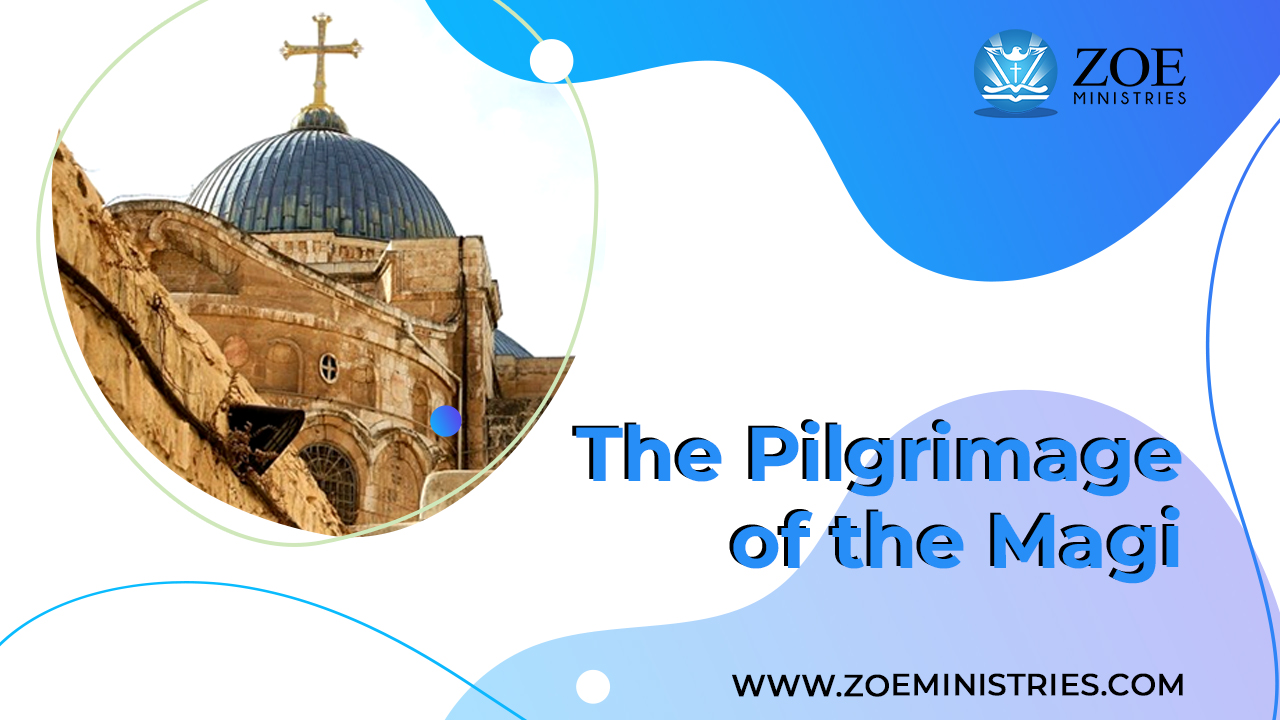
Gathering the Nations
/0 Comments/in Bishop Jordan, homepage blog /by Bishop Jordan BlogsBringing the People Together
“I have come to gather nations,” the prophecy begins. While it might be argued that the prophecy primarily refers to gathering the scattered Israelites, it could also refer to the nations themselves, the Gentiles. (The word here is goyim, which translates as “Gentiles” or “nations,” not “Jews.”) The goal of God’s plan of redemption is to bring all peoples together to worship him, to bless “all the families of the earth.” As at a pilgrim feast, the Gentiles are brought to Jerusalem to partake in God’s worship. The Lord declares in the prophecy that he will collect the nations and send “fugitives” to them to broadcast his “glory among the nations.”
These “escapees” or “survivors” have survived national persecution and God’s judgment. They resemble the earliest Christian missionaries, such as Paul, who traveled the world proclaiming the Gospel message. These missionaries’ task is to bring in a “harvest” of Gentiles and bring them to the Lord in Jerusalem. While making an offering to Jerusalem is primarily symbolic of our purposes, St. Paul took it very seriously. When he traveled over the Roman realm preaching the Gospel to the Gentiles, he also collected money from the Gentiles to give to the Christians in Jerusalem.
A River in the Desert
In Isaiah 41, the prophet likens the pilgrimage to a search for water in the desert:
“The poor and needy search for water,
but there is none;
their tongues are parched with thirst.
But I the Lord will answer them;
I, the God of Israel, will not forsake them.
I will make rivers flow on barren heights,
and springs within the valleys.
I will turn the desert into pools of water,
and the parched ground into springs.
I will put in the desert
the cedar and the acacia, the myrtle and the olive.
I will set junipers in the wasteland,
the fir and the cypress together,
so that people may see and know,
may consider and understand,
that the hand of the Lord has done this,
that the Holy One of Israel has created it. (Isa. 41:17-20)
This imagery is echoed in Psalm 84, written for the director of music:
Blessed are those whose strength is in you,
whose hearts are set on pilgrimage.
As they pass through the Valley of Baka,
they make it a place of springs;
the autumn rains also cover it with pools (Psa. 84:5-6)
A Highway in the Wilderness
Another metaphor that Isaiah uses to show God’s favor toward His pilgrims is that of the highway in the wilderness, a voice of one calling, “In the wilderness prepare the way for the Lord; make straight in the desert a highway for our God.” (Isa. 40:3)
Isaiah is more explicit in Chapter 3:
And a highway will be there;
it will be called the Way of Holiness;
it will be for those who walk on that Way.
The unclean will not journey on it;
wicked fools will not go about on it. (Isa. 35:8)
We see these words of the prophet echoed in the Gospels, particularly the Gospel of John, when John replied to the priests and Levites sent by the Jewish leaders in Jerusalem, “I am the voice of one calling in the wilderness, ‘Make straight the way for the Lord.’” (Jn. 1:23)
Prophetic wisdom and anointing await you. Connect for a personal prophecy.
Join our LIVE Conference Call!
1) Call 515-604-9266
2) Go to startmeeting.com, and use the login: BishopJordan
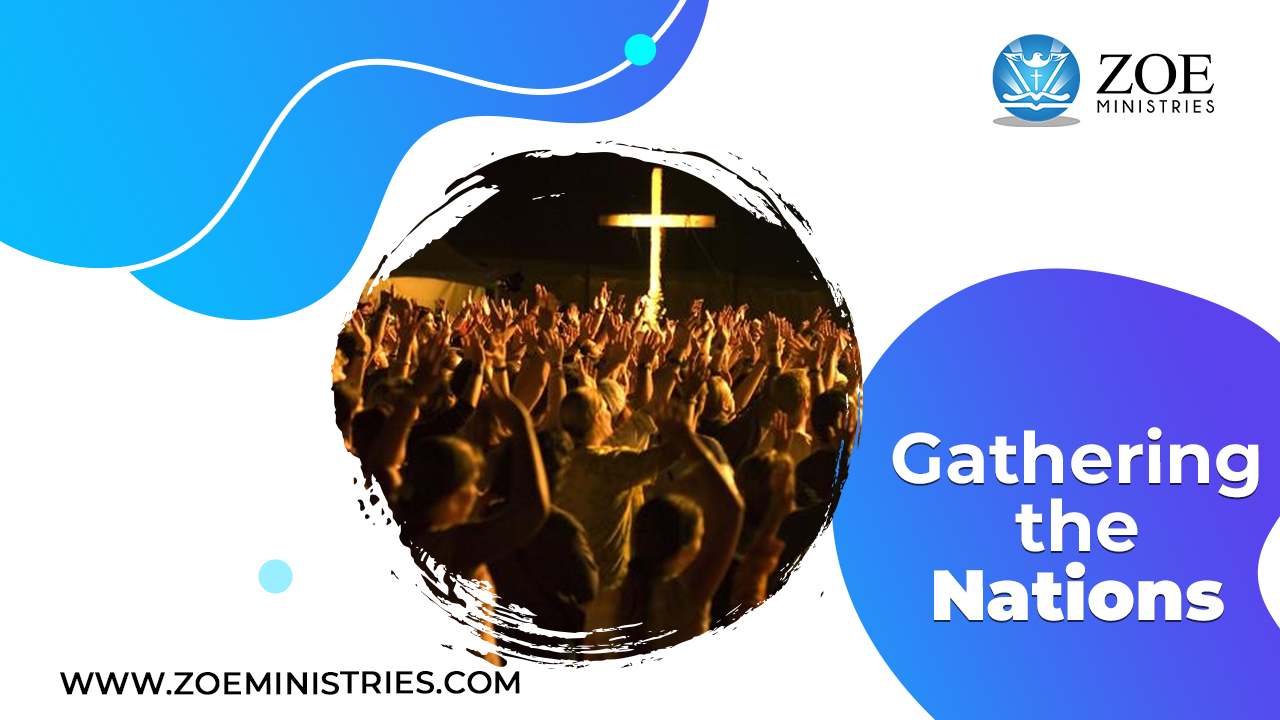
Metaphoric Pilgrimages
/1 Comment/in Bishop Jordan, homepage blog /by Bishop Jordan BlogsMetaphoric Pilgrimages :
“Life is a pilgrimage. The wise man does not rest by the roadside inns. He marches direct to the illimitable domain of eternal bliss, his ultimate destination.”
Sivananda
POWER TRUTH
Whoever believes in the Son has eternal life; whoever disobeys the Son will not see life but must endure God’s wrath.
John 3:36 NRSV
Apart from the literal pilgrimages in the Bible, the theme of pilgrimage comes up repeatedly metaphorically. The prophet Isaiah explicitly uses the metaphor of the Mountain of the Lord:
In the last days
the mountain of the Lord’s temple will be established
as the highest of the mountains;
it will be exalted above the hills,
and all nations will stream to it.Many peoples will come and say,
“Come, let us go up to the mountain of the Lord,
to the temple of the God of Jacob.
He will teach us his ways,
so that we may walk in his paths.”
The law will go out from Zion,
the word of the Lord from Jerusalem.
He will judge between the nations
and will settle disputes for many peoples.
They will beat their swords into plowshares
and their spears into pruning hooks.
Nation will not take up sword against nation,
nor will they train for war anymore.Come, descendants of Jacob,
let us walk in the light of the Lord. (Isa. 2:2-5)
Isaiah: Shakespeare of the Prophets
Isaiah is sometimes referred to as the “Shakespeare of the Prophets” due to his verse’s lyrical and poetic nature. In another passage, he describes the final culmination of God’s plan in terms the Jews would understand – using the metaphor of the pilgrimage feasts.
As discussed in the previous chapter, the ancient Jews celebrated several holidays by pilgrimage to the Jerusalem temple. These feasts, Passover (Pesach), Pentecost (Shavuot), and the Feast of Booths (Sukkot), are related to events in Israel’s history and with agricultural occasions such as harvest.
During these feasts, Jewish men would come to Jerusalem from around the Holy Land, bringing sacrifices and grain offerings from their farms. They would eat ceremonial meals in the holy city and worship the Lord with special rituals. These feasts would be an excellent time of unity, celebration, and encounter with God. Isaiah uses these pilgrim feasts to portray the end when God will finally gather the redeemed. Here we can see a special connection to the ancient Feast of Booths. Which is also called the Feast of In-Gathering since it is a harvest-time feast, a time when farmers “in-gather” produce (Exo. 23:16). However, the final “in-gathering” that the prophet speaks of is a bringing in of people rather than grain.
In Isaiah 66, the prophet tells the people:
“And I, because of what they have planned and done, am about to come and gather the people of all nations and languages, and they will come and see my glory.
“I will set a sign among them, and I will send some of those who survive to the nations—to Tarshish, to the Libyans and Lydians (famous as archers), to Tubal and Greece, and to the distant islands that have not heard of my fame or seen my glory. They will proclaim my glory among the nations. And they will bring all your people, from all the nations, to my holy mountain in Jerusalem as an offering to the Lord—on horses, in chariots and wagons, and on mules and camels,” says the Lord. “They will bring them, as the Israelites bring their grain offerings, to the temple of the Lord in ceremonially clean vessels. And I will select some of them also to be priests and Levites,” says the Lord.” (Isa. 66:18-21)
Prophetic wisdom and anointing await you. Connect for a personal prophecy.
Join our LIVE Conference Call!
1) Call 515-604-9266
2) Go to startmeeting.com, and use the login: BishopJordan

Pilgrimages and the Jewish Community
/0 Comments/in Bishop Jordan /by Bishop Jordan BlogsthTPilgrimages and the Jewish Community
Reaffirming Commitment
The pilgrimage festivals allowed the Jewish community a chance to reaffirm their devotion to the covenant with God, enhance the nation’s awareness of itself as a religious community, and keep Jerusalem and the Temple site sacred. These occurrences unite people. Some academics think Jerusalem’s “business” community at the time of the Bible supported the obligation to go to Jerusalem and stay there for the whole holiday, which benefited from the regular flow of pilgrims looking for food, accommodation, and animals to sacrifice.
In the Hellenistic and Roman periods, pilgrimage festivals were a major social and religious institution. They transported ancient Mediterranean Jews to Jerusalem. Tens of thousands of Jews made pilgrimages annually. This included raising animals for sacrifices, a lively animal market, a complicated banking system, and hundreds of inns and taverns to lodge pilgrims.
Historical Pilgrimages
King Herod the Great, the Roman-appointed ruler of Judea, erected a vast plaza around the Temple to accommodate travelers. This increased the Temple’s space, allowing thousands more pilgrims to attend religious activities. The Harem esh-Sharif in Jerusalem is built on Herodian Temple ruins. The Dome of the Rock and Al Aqsa mosque is here. The Western Wall, sometimes called the “Wailing Wall,” supports the Herodian Temple’s courtyard. A historical rabbinic remembrance of the Temple’s heyday tells that even when hundreds of thousands of pilgrims crowded into the courtyard, no one complained about the crush.
The Romans demolished the Second Temple after the Great Jewish Revolt in 70 C.E. The pilgrimage festivals continued, although largely in synagogues. Since 2,000 years ago, pilgrimages to the Temple in Jerusalem halted, although these holidays are still dubbed “pilgrimage festivals” Historical and agricultural themes have replaced animal sacrifices in Diaspora festivities. The numbers of Israelis make a pilgrimage to the Western Wall, all that’s left of the Temple and one of Judaism’s holiest sites. They do this because they believe it honors our Temple-era forebears.
Invitation
Prophetic wisdom and anointing await you. Connect for a personal prophecy.
Join our LIVE Conference Call!
1) Call 515-604-9266
2) Go to startmeeting.com, and use the login: BishopJordan
Passover – Commemorating the Exodus
/0 Comments/in Uncategorized /by Bishop Jordan BlogsRemembering the Exodus
Passover commemorates God’s deliverance of the Jews from slavery in ancient Egypt and their emancipation as a nation under Moses’ leadership. It commemorates the story of the Exodus as told in the Hebrew Bible, particularly the Book of Exodus, in which the Israelites were delivered from slavery in Egypt. According to traditional biblical chronology, this event occurred around 1300 BCE. Passover is a spring celebration that offers the “first fruits of the barley” during the Temple’s existence in Jerusalem, the first grain to ripen and be harvested in the Land of Israel.
Passover begins on the 15th of the Hebrew month of Nisan. It lasts seven days (in Israel and for Reform Jews and other progressive Jews worldwide who follow the Biblical mandate) or eight days (for Orthodox, Hasidic, and most Conservative Jews) (in the diaspora). In Judaism, a day begins at sundown and ends at nightfall the next day; hence, the first day of Passover begins after dusk on the 14th of Nisan and finishes at dusk on the 15th of Nisan. When the sunset of Nisan arrives, the traditions peculiar to Passover begin with the Passover Seder. Passover is observed in the Northern Hemisphere in spring, as the Torah prescribes: “in the month of [the] spring.” It is one of the most frequently observed Jewish festivals.
What happened then
The Bible says that God assisted the Children of Israel to escape slavery in Egypt by inflicting ten plagues on the ancient Egyptians before the Pharaoh would free his Israelite slaves; the tenth and deadliest of the plagues was the death of the Egyptian firstborn.
The Israelites were ordered to mark the doorposts of their homes with the blood of a killed spring lamb, and when the spirit of the Lord saw this, he knew to pass over the firstborn in these households, hence the holiday’s English name.
When Pharaoh freed the Israelites, it is said that they were in such a hurry that they could not wait for bread dough to rise (leaven). In commemoration, no leavened bread is eaten during Passover, which is why Passover is called the feast of unleavened bread in the Torah. Thus matzo (flat unleavened bread) is eaten during Passover and is a holiday tradition.
Passover, together with Shavuot and Sukkot, is one of the Three Trip Festivals (Shalosh Regalim), during which the entire kingdom of Judah made a pilgrimage to the Temple in Jerusalem.
Prophetic wisdom and anointing await you. Connect for a personal prophecy.
Join our LIVE Conference Call!
1) Call 515-604-9266
2) Go to startmeeting.com, and use the login: BishopJordan

